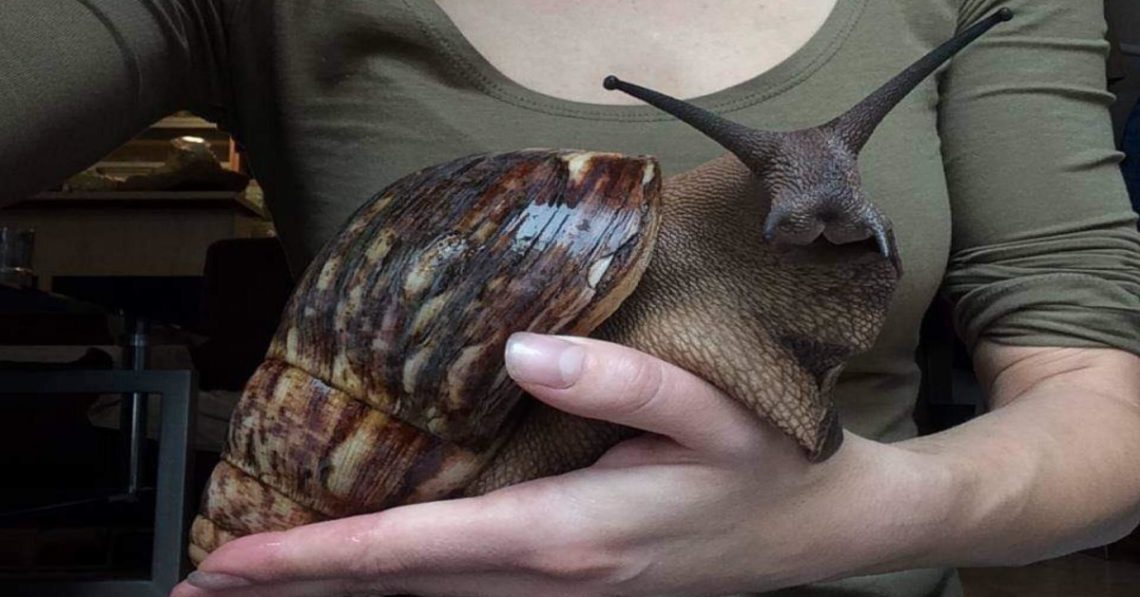
10 largest snails in the world: features of keeping Achatina at home
The image and the motto “I carry everything with me” on the coat of arms of the Italian Dukes of Gonzaga aptly immortalized the image. Most of the species are miniature, but there are those that “carry everything with them” a lot – real giants. So, get acquainted: the largest snails in the world!
Contents
- 10 Lunar snail | up to 5 cm
- 9. Earth snail | up to 5 cm
- 8. Turkish snail | 4-6 cm
- 7. Grape snail | up to 9 cm
- 6. Tropical tree | 5-9 cm
- 5. Limicolaria fiery | up to 10 cm
- 4. Scootalus | up to 10 cm
- 3. Achatina giant | 5-10 cm
- 2. Florida horse snail | 60 cm
- 1. Giant Australian trumpeter | 90 cm
- Features of keeping large domestic snails Achatina
10 Lunar snail | up to 5 cm
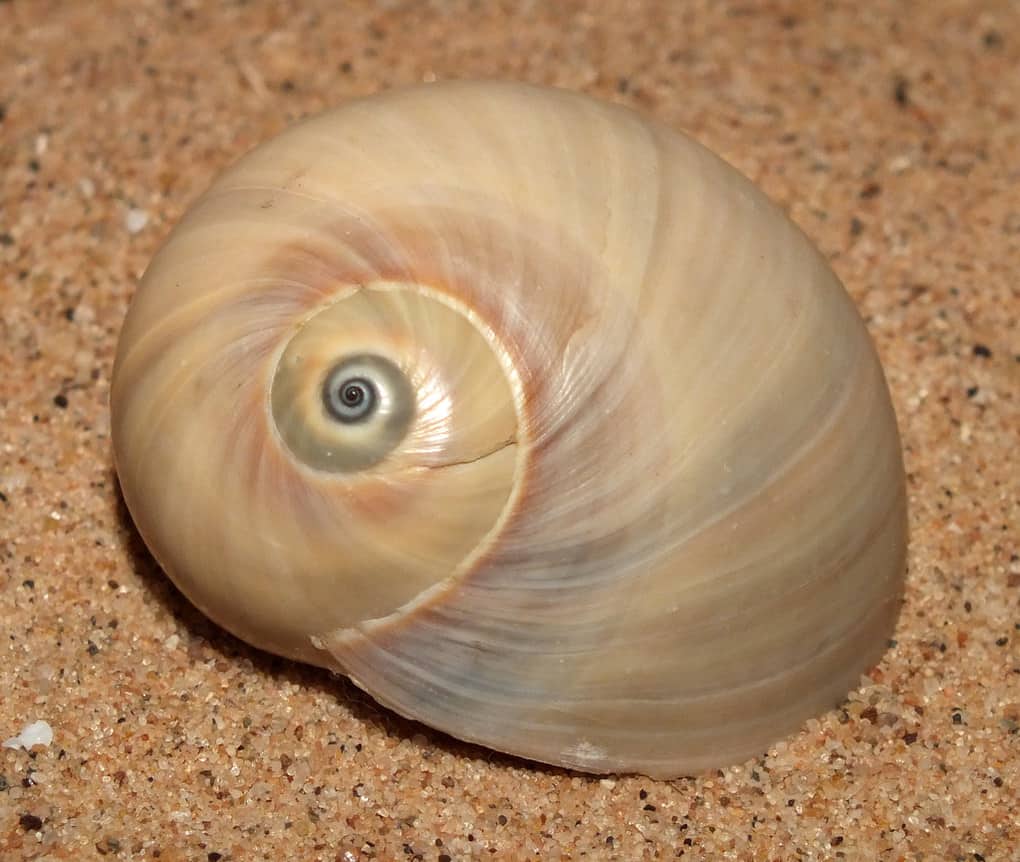
moon snail (Neverita didyma) – is a predatory sea snail, reaching a size of up to 5 cm. It has a white spherical shell with a smooth surface and a small curl. The dimensions of the shell are relatively small 1,7-3 cm.
9. Earth snail | up to 5 cm
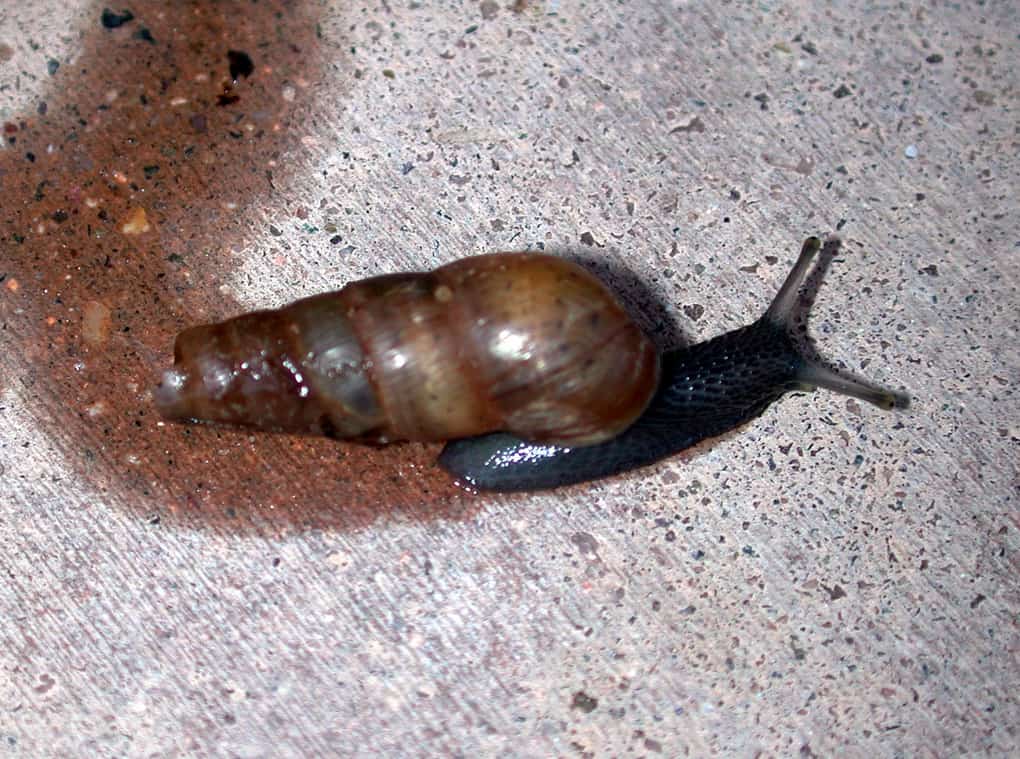
earth snail (Rumina decollata) – has a shell in the form of a truncated cone and reaches a size of up to 5 cm. This species was discovered in 1758 in North America, subsequently transported to Europe and also became an inhabitant of the Mediterranean Sea. The snail is nocturnal and feeds on plants.
8. Turkish snail | 4-6 cm
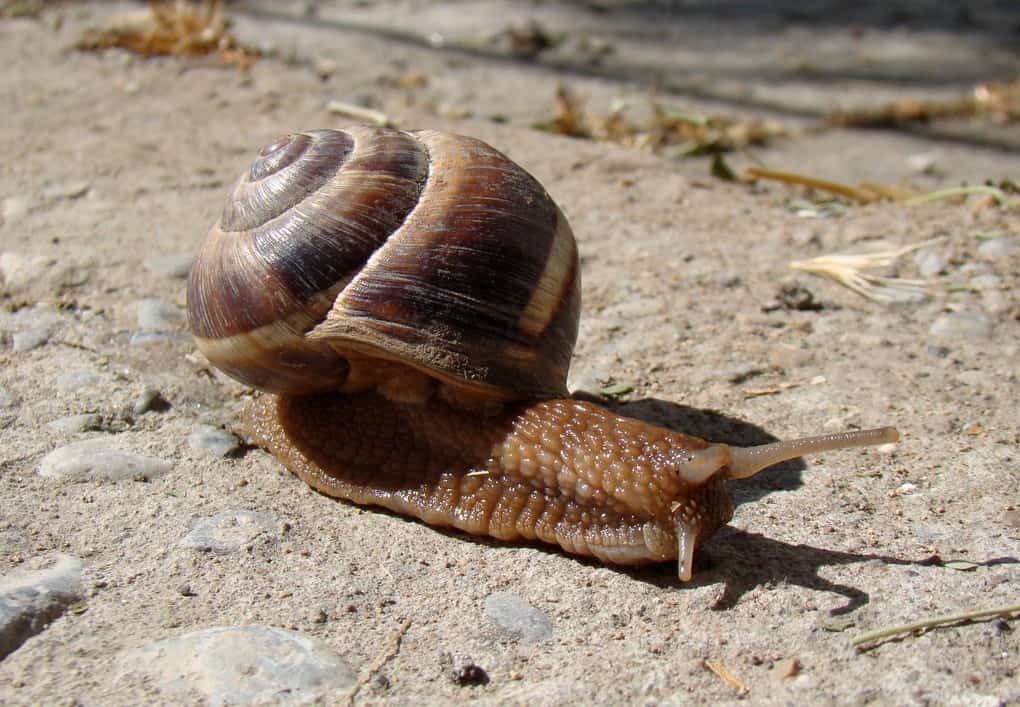
Turkish snail, where more often it is called mountainous. Just for the first time this species was described in Turkey. In general, this gastropod lives in the mountainous regions of southern Europe, Asia Minor, the Caucasus, and the Crimea. That is, this snail can be called the largest of the Russian ones. The way of life is similar to the South American scutalus. Prefers river valleys and the vicinity of streams. May fall asleep during drought. It is one of the largest in Europe, especially in the Middle East (where the humidity is not very good). Shell diameter 4-6 cm.
7. Grape snail | up to 9 cm
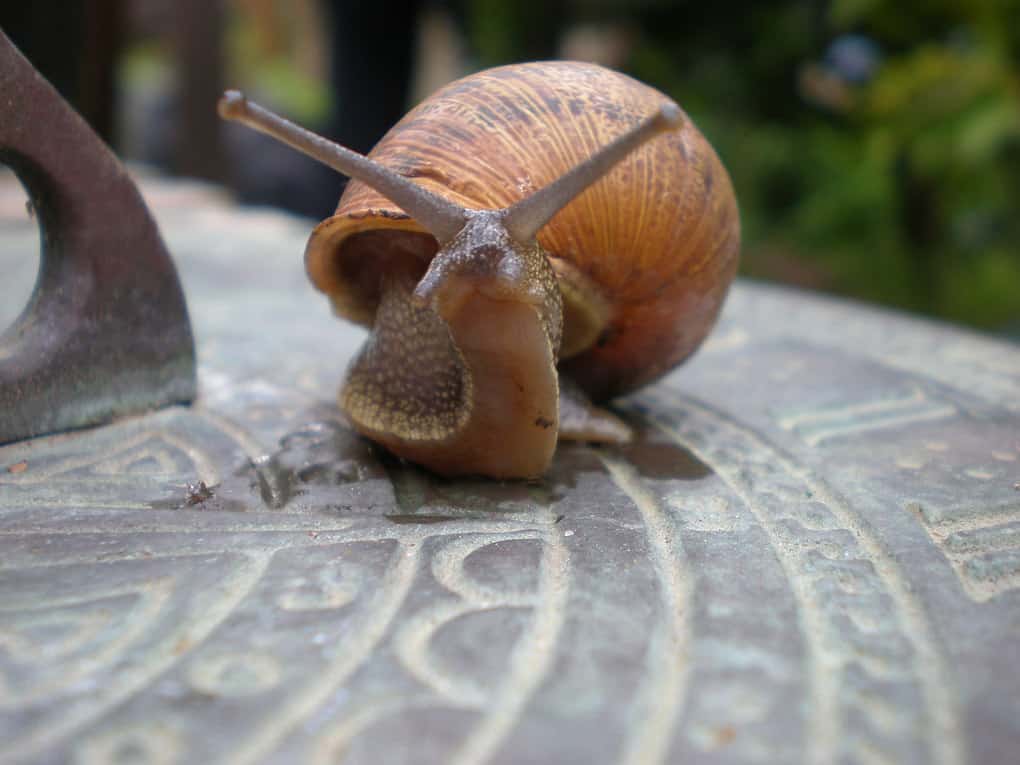
grape snail – the native European is inferior in size to the two species described above, but it is clearly the record holder among the northern species: the leg (body) can stretch up to 9 cm. The “house” is large, twisted counterclockwise. It is not exotic. agricultural pest. Headache of winegrowers. However, it feeds on the shoots of not only grapes, but also other garden plants. But you can get revenge on her by eating! In the territories of modern Italy and France, it has been bred as a delicacy since ancient times. Since it is used as a food product, it is dangerous to human health (very vulnerable to various parasites).
“Vinogradka” is unpretentious, lives for a long time (up to 5 years, the record for home maintenance is 30 years!).
6. Tropical tree | 5-9 cm
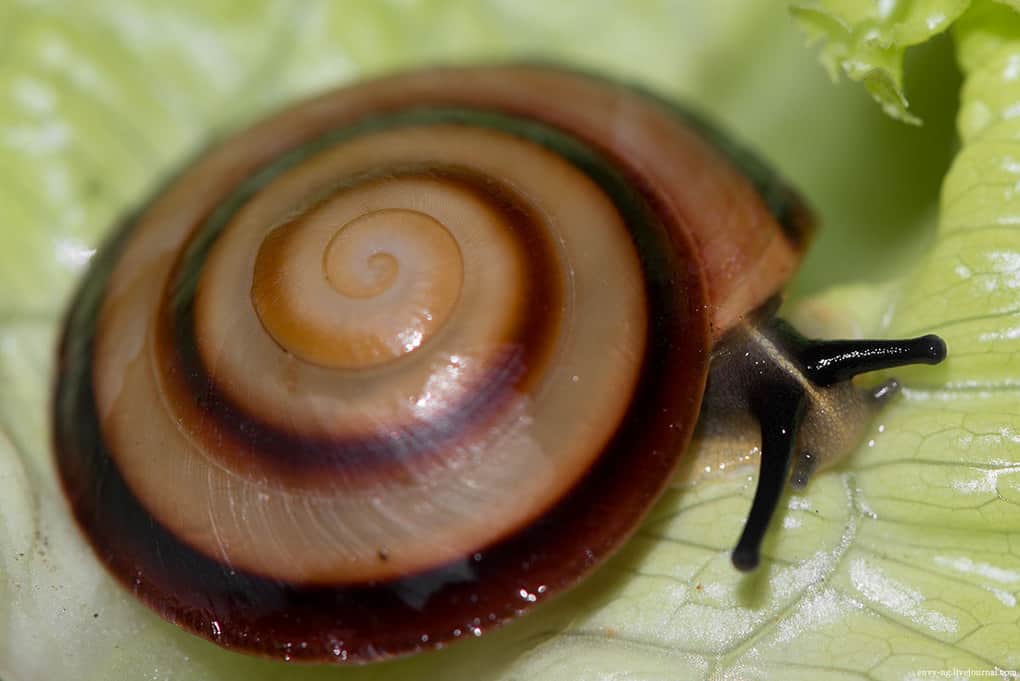
tropical woody (Caracolus sagemon), native to Central America. A distinctive feature is an unusual flat striped orange-black shell, twisted counterclockwise, outwardly resembles a motley inverted cup or pyramidal stone (the name of the species from Latin). Different variants of body color give a very beautiful coloring, for which snails are very loved by those who keep them at home. Exclusively vegetarian (except for products containing calcium), open water lover (literally swims). Feels better next to his own kind. As for size, it is very dependent on nutrition, living conditions. When everything is just fine, caracolus can be considered a giant, growing up to 15 cm. But this rarely happens, the usual leg length is 5-9 cm.
5. Limicolaria fiery | up to 10 cm
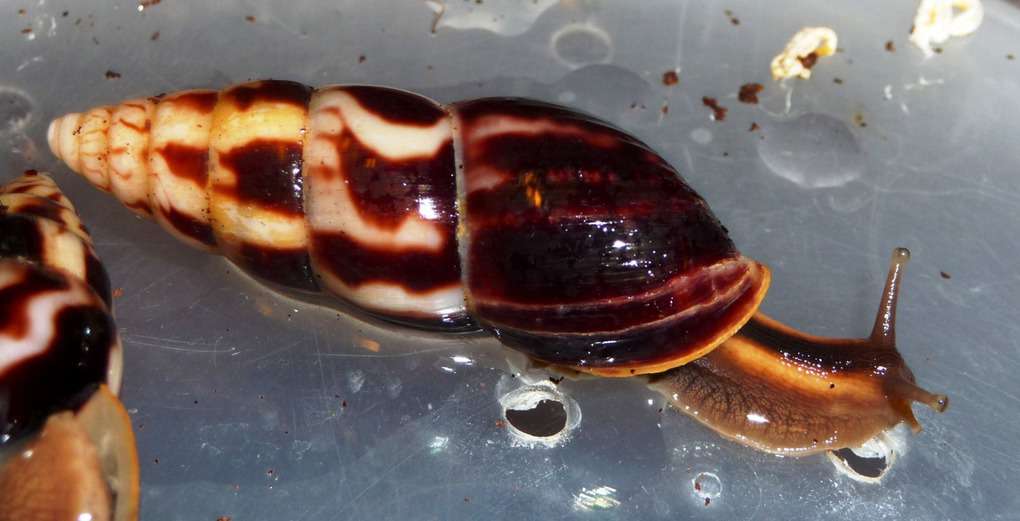
Limicolaria fiery (Limicolaria flammea) – African, but also spread to the Asian tropics. Wears a tubular shell. It wears: sometimes it rises so high above the leg that it seems like some kind of appendage. Prefers nocturnal lifestyle. Unpretentious. You can’t say about her: “Slow, as you know who.” Just the opposite: fast, with some kind of feline dexterity. Therefore, for an inattentive owner, this beautiful gastropod creature with black and red contours on the shell can famously “leak” from the terrarium. Grows up to 10 cm.
4. Scootalus | up to 10 cm

Scutalus the owner of the “author’s” (its form is very unusual) shell lives on the bushes of the stony plains of the Peruvian Highlands. Humidity is not very good here, but it is not very important for the scutalus. Sizes up to 10 cm. The unusual shape attracted the attention of craftsmen from the ancient Maya: decorative items were found using the “house” of the scutalus, not to mention simple beads.
3. Achatina giant | 5-10 cm
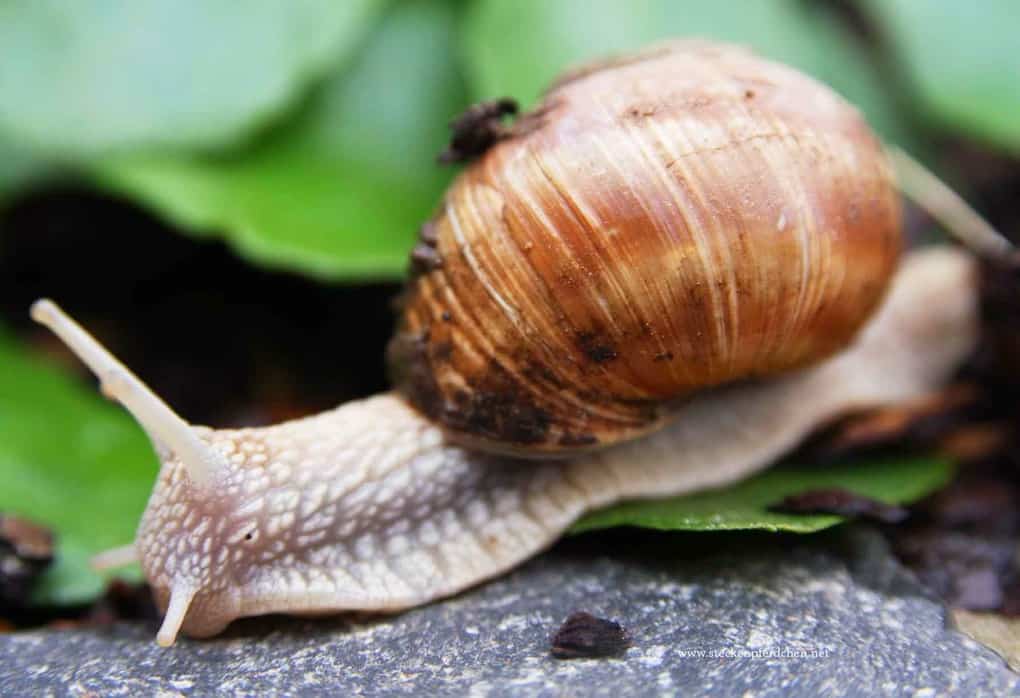
Latin name (Achatina fulica) already notes that she is a fulica – gigantic. The average size is 5-10 cm. Specimens up to 20 cm long have been noted. Naturally, the older it is, the larger.
East Africa is considered the birthplace of the largest land mollusk (that is why it is also called the African giant). It did not survive in the north, but where the climate is close to native, it thrives. For the locals, it is not exotic. They even fight her! She is a pest, which is to blame for her terrifying appetite for crops. Especially fond of sugar cane. Moreover, the greatest harm is caused by juveniles, which prefer fresh plants.
The older ones, over time, are increasingly switching to decay products, sometimes they do not disdain even the corpses of animals. They love darkness and humidity. They lead a midnight lifestyle, but when it is cloudy, they can go out to eat during the day.
2. Florida horse snail | 60 cm
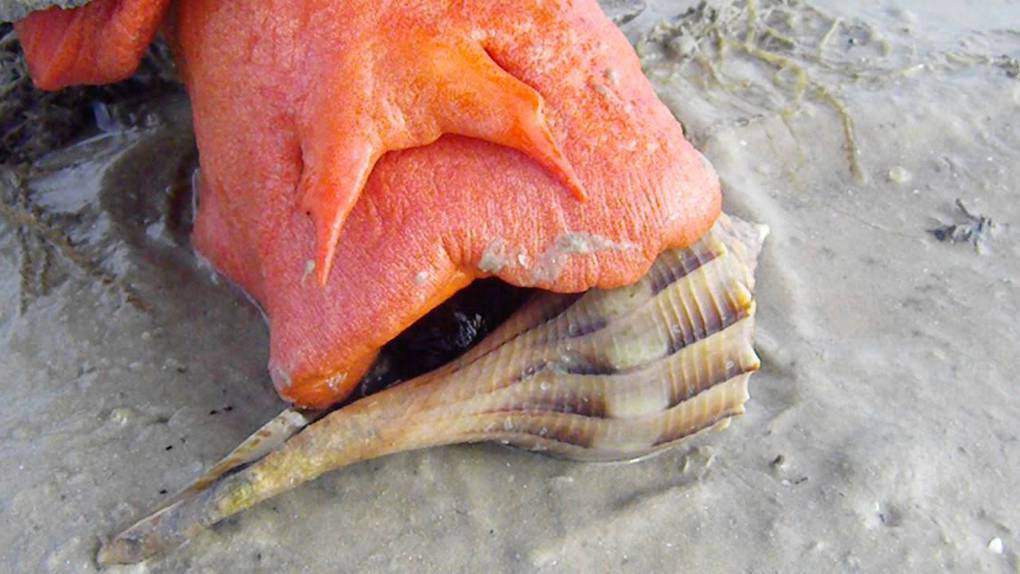
A must-have character in photographs of the largest snails in the world. It is similar to the Australian trumpeter, although it is inferior in size (60 cm). However, in terms of dimensions, it is the champion of both Americas. It lives along the American coast of the Gulf of Mexico. It lives in shallow water, like the trumpeter, but an even more aggressive predator: it devours not only worms, but almost everything it can. Other “horses” are smaller too.
It has a very catchy appearance due to the incompatibility of colors: a bright orange body and a gray shell. It seems that this frightens those inhabitants of shallow water who can eat the “horse” themselves while it is small. The “house” of our heroine is always unique in shape, and therefore is a valuable trophy for divers as a souvenir. Those who are especially fond of it even eat it!
1. Giant Australian trumpeter | 90 cm
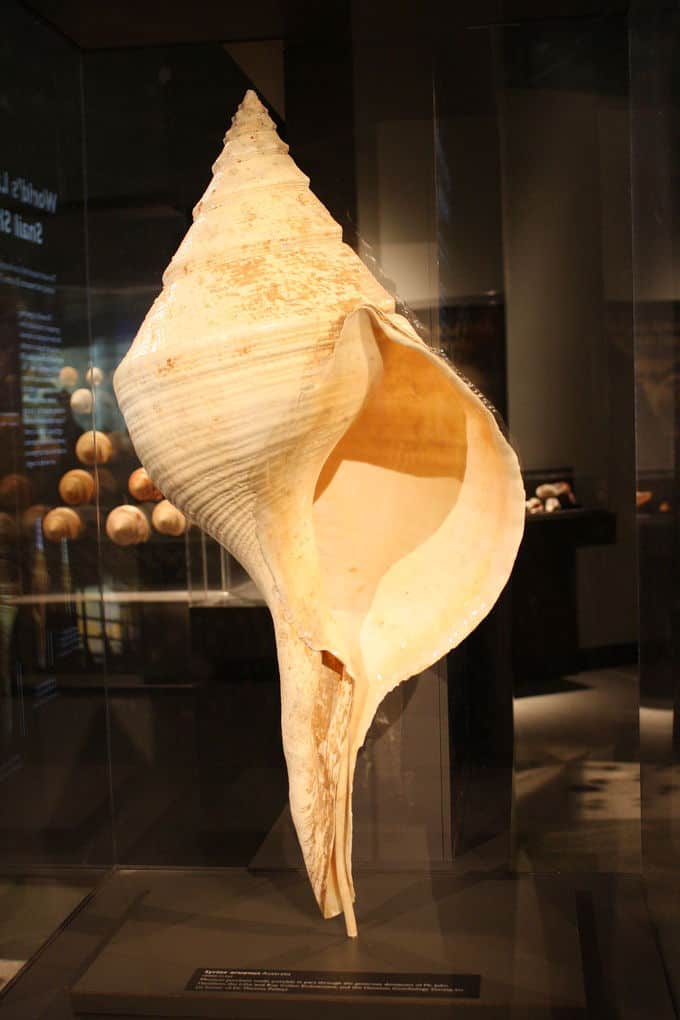
The name reflects the look. “House” is similar to a large horn about 90 cm long. Therefore, I would like to call the trumpeter a more solid word “mollusk”. It lives off the northern coast of Australia, the shores of the nearest islands of the Indonesian archipelago. Lives in shallow water. Color: sand. Predator – a thunderstorm of sea worms. Judging by the fact that trumpeters gain up to 18 (!) kg of weight, they eat a lot of worms.
Features of keeping large domestic snails Achatina
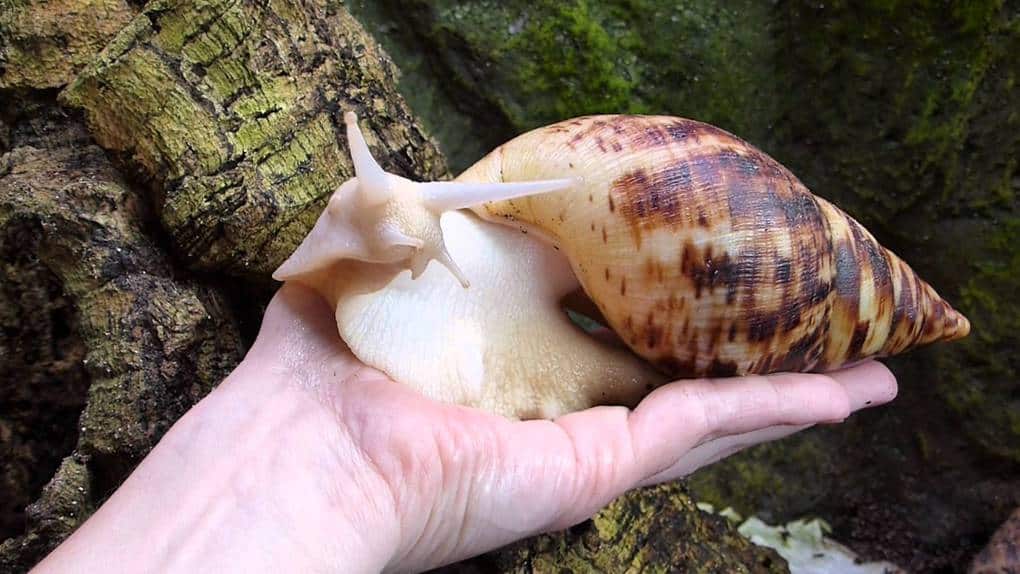
It has long been no secret for a lover of wildlife that you can look for a long time not only at running water and fire, but also at a creature with a shell on its leg, slowly moving about its snail business. It is not surprising, therefore, that they are not uncommon as pets. A number of species from our “giant” top can be kept at home. It is clear that your bathroom will not be enough to support the life of a trumpeter or a horse, but here Achatina, “grapes”, caracolus, limikolaria feel good in an artificial habitat.
Let’s tell, perhaps, about the largest snails kept at home – Achatina, which grow to the size of an adult’s palm. What do they need to be as comfortable as possible? What is good for them and what is bad?
A simple old aquarium or even a plastic box can become a home for them. The second option will not in the least confuse the inhabitants, who already love the dusk, but it will not be very convenient for you to watch the pets. A cardboard box is definitely not suitable: Achatinas are able to eat meat, and they can even cope with thick paper: the walls of such a “house” will be gnawed.
Space matters. Count as follows: for one individual, the volume is 10 liters.
Be sure to close the house with a lid (plexiglass or plastic). They are not fast, but constantly moving creatures.
Air holes must be made in the lid.
The “floor” should be loose soil, similar to that in flower shops for transplanting flowers. Pets should crawl on it without problems, with pleasure. Soil moisture is determined by the behavior of gastropods. They move little on the ground and are generally sluggish – too dry, avoid descending on it at all – too wet.
Need a pool. In nature, “Africans” love puddles. About a puddle in a fixed container should be water. Not more! Achatina love water, but they cannot swim, they can choke. Water is changed once a week. Soil – once every 1-3 months. You can plant live plants, just don’t be surprised that someone will definitely taste them.
Another important point is the air temperature. Our pets are Tropicans: they need plus 26 degrees. They will not die, of course, even at 20, but after 24 their vital activity stops: they become lethargic, inactive. The desired temperature can be easily achieved with a dim lamp. However, they do not need light, it even interferes with them.
That’s all. All you need is food. And then after two or three days (babies up to six months are fed every other day). As experience shows, they eat almost all raw plant foods. Some disdain perhaps hard vegetables (potatoes, carrots). Some people like bread, cookies, oatmeal, grated cereals. You can sometimes diversify the menu with pieces of meat or boiled eggs. But they do not eat a lot of such food, and the young will not touch it at all. It is better to feed at night. Be sure to have ground eggshells or natural chalk in the aquarium.
Achatinas allow themselves to be abandoned for almost a month. Without food, water and at low temperatures, they hibernate, in which they probably dream of the returned owner. You can return them to an active life by spraying with water, raising the air temperature. But the real owner is unlikely to allow his pets to go into suspended animation. Proper care will allow them to live with you for about 10 years.





